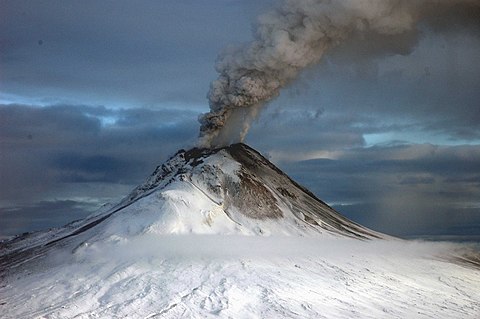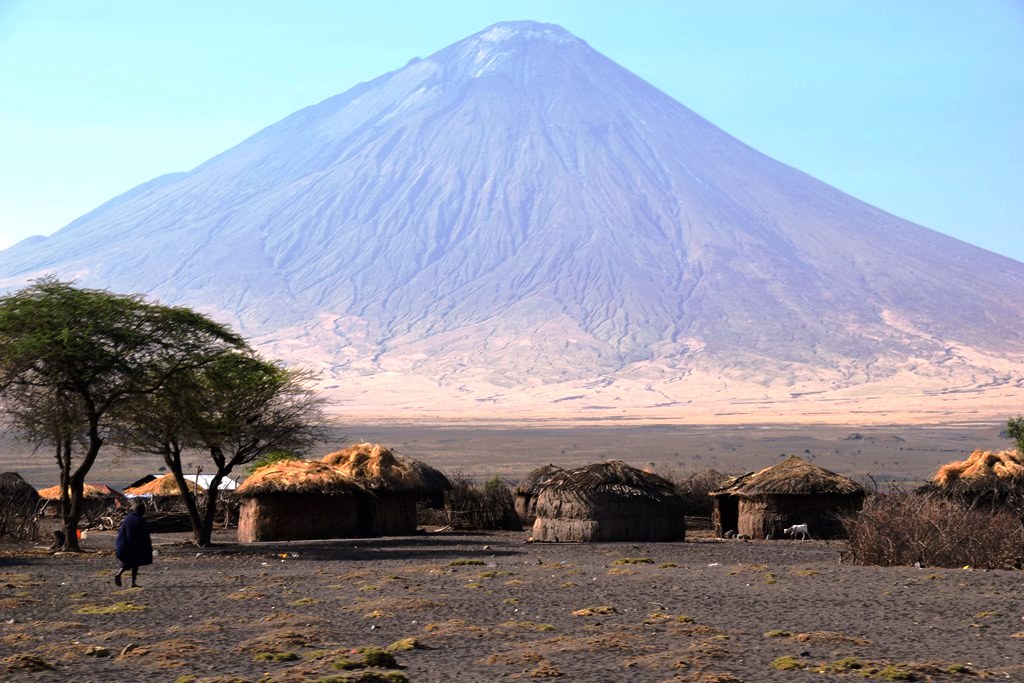- Mt. Ol Doinyo Lengai
Ol Doinyo Lengai is an active volcano in Tanzania. It consists of a volcanic cone with two craters, the northern of which has erupted during historical time. Uniquely for volcanoes on Earth, it has erupted natrocarbonatite, an unusual, cold and highly fluid type of magma. Recent eruptions in 2007-2008 impacted the surrounding region.
The Maasai and Sonjo people refer to the volcano as “The Mountain of God”, viewing it as the abode of the god Engai, who withdrew there after being hit by a hunter with an arrow. Other names are Basanjo, Donjo Ngai, Duenjo Ngai, Mongogogura, Mungogo wa Bogwe and Oldonyo L’Engai.
Ol Doinyo Lengai lies in Tanzania, 16 kilometers (9.9 mi) south of Lake Natron and 120 kilometers (75 mi) northwest of Arusha. The summit was first explored between 1904 and 1915. As of 2012 about 300,000 people live in the region, and livestock farming is the most important economic activity although tourism is increasingly important.
Ol Doinyo Lengai is a symmetric cone that rises more than 1,800 meters (5,900 ft) above the surrounding rift valley. It has two craters on either side of the mountain summit, which is formed by a 110 meters (360 ft) high ridge. The floor of the northern crater is covered with lava flows that resemble pahoehoe lavas. Small cones with sizes ranging from 2 meters (6 ft 7 in) to over 10 meters (33 ft) occur in the crater and produce lava flows from their summits and, when they collapse, from their flanks. The southern crater is inactive and sometimes filled with water. White volcanic ash deposits cover the slopes of the volcano, which have large fractures on the western flank. There are parasitic vents on Ol Doinyo Lengai’s flanks, such as Kirurum Crater on the western, the Nasira cones on the northern, Dorobo crater on the northeastern and Oltatwa Crater on the eastern flank.
There are deposits of past debris avalanches around the volcano, especially on its northern flank;one such event has left a scar on the volcano’s flanks. Their occurrence may have been influenced by regional fault systems.



